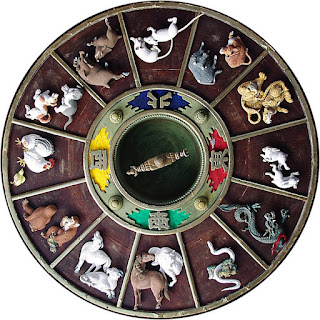Author: Nick Terrell, Bureau of Land Management Fire
Have you ever conceptualized the way that you handle
interpersonal conflict? I started to take a hard look at how I engaged in
conflict after my relationship with a past manager deteriorated while working
as a handcrew assistant/detailed handcrew captain over the course of seven
years. When I was done being angry at the manager, and when I accepted that my
actions were the only ones that I had agency over, I supposed it was time to
change my tactics.
The first lesson learned was that conflict is
unavoidable. If you're living life with the goal of zero conflict and “all good
vibes” it's not going to work. The next lesson that comes on the coattails of
the first is that conflict is a gift. Through uncovering your, or your opposing
party’s position, you have a clear anchor point to begin addressing the issue
from. In other words, if you uncover the “no” you know where the boundary is
and can then work to find an alternative.
There is a simple model - the Thomas-Kilmann Instrument
(TKI) - that defines five behaviors that humans use when addressing conflicts
with others: competing, avoiding, accommodating, compromising, and
collaborating. In the model, the behaviors are organized spatially on a graph
(see figure). One axis represents the importance of one’s goals, and the other
axis represents the importance of their relationship with the other party. When
you look at a person’s behavior in managing conflict as a ratio of prioritizing
their goals vs. prioritizing the relationship, it depersonalizes the issue.
Source (A.O. Nichols. Making Conflict Suck Less: The Basics. Boise
State Pressbooks. 2020)
If you have a shred of empathy, you can acknowledge that
the other party is a human with their own set of values and motivations, right?
Those values and motivations dictate their actions and goals in conflict, just
like yours. Knowing how you prefer to engage in conflict and understanding the
spectrum of conflict behaviors increases your situational awareness. I have
come to view interpersonal conflict as being similar to wildland fire
suppression in that different situations call for different strategies and
tactics. We are all capable of switching from direct to indirect tactics when
fire behavior forces our hand. Why couldn’t we switch from accommodating to
competing behavior in conflict when an issue is very important to us? Better
yet, why couldn’t we have the patience to work with the other party to
collaborate on a solution that satisfies both of our goals and strengthens the
relationship by co-creating a resolution?
Over the seven years I spent on my last crew - the one
that I desired to one day run - I had primarily employed the conflict behaviors
that prioritize the relationship. When faced with conflict I avoided,
accommodated, or compromised. This led to the formation of resentments for the
manager I worked for, who primarily employed the conflict behavior of
competing. I wanted a good working relationship, they wanted personal goal
fulfillment. We were going north and south in terms of how we were engaging in conflict.
Sometimes I wonder if events could have played out differently if I had
advocated more for my own goals in conflict with this individual.
What was the last issue over which you had open
disagreement with another person? Draw it up in your mind. Did you address the
issue with the person directly? Did you wait a little while, think it over, and
bring it up later? Did you bury it without addressing it? If you did bring it
up, how did you go about addressing the issue? There is no shame in any posture
when it comes to handling conflict. What matters is knowing which conflict
strategy you typically employ, and that there are other strategies available to
you to work toward resolution. What matters more is having the courage to do
it.
A fire leader’s ability to navigate conflict effectively
with others is a core skill. A personal anchor skill. As part of our duty
to develop our subordinates for the future, we must create a culture of respect while building our
teams. Fire leaders must show integrity
in knowing themselves and seeking improvement, accepting responsibility for
their actions, and setting the example. Do not hesitate to address conflict. Do
not show discouragement when faced with setbacks. Do choose the difficult right
over the easy wrong. Show your supervisors, peers, and subordinates that you
are comfortable with conflict to build the kind of culture that embraces it for
the gift that it can be.
I have included a link to a free version of the
Thomas-Kilman conflict styles assessment below.
Thomas-Kilmann Conflict Styles Assessment: https://www.usip.org/public-education-new/conflict-styles-assessment
Nick Terrell is a career federal wildland firefighter. Following a career altering injury, he left his position on a handcrew for a wildland fire support position. The career change has allowed him to pursue a master’s degree at Boise State University studying Conflict Management and Leadership. He still maintains operational fire qualifications and is a diligent student of fire.



